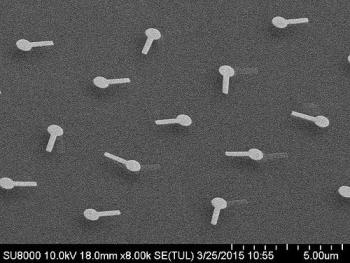IBM researchers designed a method to estimate and measure friction in various materials. The method allows the scientists to mechanically measure the tension and friction of two sliding sheets of graphite, something that has been previously poorly understood and theory-based. The team also derived a mathematical expression to illustrate what they were seeing in an atomic force microscope (AFM), which turned out to be in agreement with theoretical models.

The scientists discovered that the friction is randomly determined in nature and directly based on the interaction between the proportionate lattices of the material, in this case graphite. A conversation with one of the researchers revealed that since the study focused on the facial aspects of the graphite, it is his belief that it would also apply for graphene, but this will require further inquiry.
The scientists are interested in using superlubricity in the design of a new transistor, commonly referred to as the "next switch." The lack of friction could make a transistor that generates less heat and therefore uses less energy. The team also hopes that these findings will someday help other scientists design energy efficient MEMS devices.
Source: ibmresearchnews

